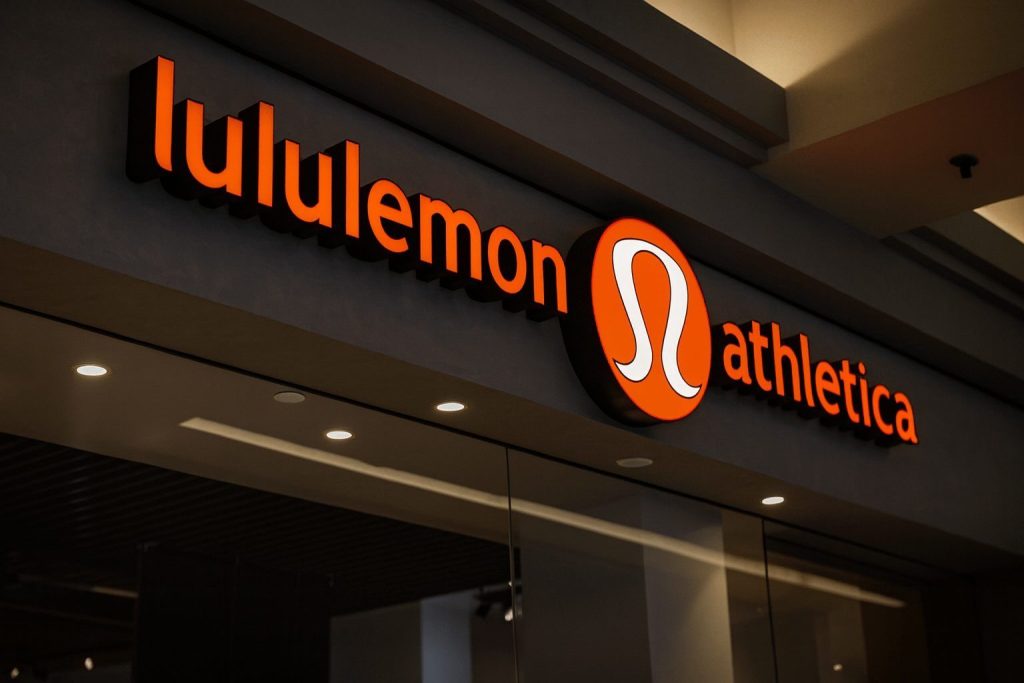As of Sunday, November 23, 2025, Coca‑Cola stock (NYSE: KO) is heading into the new trading week just shy of record territory. In the last trading session on Friday, November 21, KO finished around $72.95 per share, gaining roughly 2.5% on the day and sitting less than 2% below its 52‑week high near $74.38. At these levels, the beverage giant carries a market capitalization of about $314 billion and trades as one of the most prominent defensive names in the U.S. consumer staples sector. [1]
Year to date, Coca‑Cola shares have climbed about 15%, with total shareholder return over the past 12 months running at roughly 15% as dividends compound the stock’s steady price appreciation. [2] That rebound, after several years of choppy performance, reflects a mix of resilient earnings, disciplined pricing, and renewed investor appetite for dividend stalwarts.
At the same time, KO is no longer cheap. The stock trades at a mid‑20s price‑to‑earnings multiple, just below key beverage peers but comfortably above broader sector averages. [3] With an ex‑dividend date on December 1, 2025, an annualized dividend of $2.04 per share, and a yield around 2.8%, investors now face a familiar question: how much more are markets willing to pay for Coca‑Cola’s combination of brand power, cash flow, and income? [4]
Below is a closer look at how KO stock is positioned today, what’s driving sentiment, and what to watch in the weeks ahead.
KO stock today: price levels and trading snapshot
On Friday, November 21, KO shares: [5]
- Opened: around $71.7
- Intraday range: roughly $71.2 to $73.2
- Last trade: about $72.95
- Volume: approximately 26.5 million shares, in line with recent averages
- 52‑week range: $60.62 (low) to $74.38 (high)
- Market cap: about $313.8 billion
- Valuation & risk profile: price‑to‑earnings near 24x, price‑to‑earnings‑growth ratio around 3.6, and beta around 0.4, underscoring Coca‑Cola’s role as a low‑volatility, income‑oriented stock. [6]
With KO now trading only a couple of dollars below its 52‑week high, the stock is firmly in “near record highs” territory. That positioning can cut both ways:
- On the upside, it signals broad investor confidence in Coca‑Cola’s earnings resilience and dividend.
- On the downside, it leaves less room for multiple expansion if growth slows or if investors rotate out of defensives into higher‑beta sectors.
Fundamental backdrop: Q3 2025 earnings still support the bull case
Coca‑Cola’s third‑quarter 2025 results, released on October 21, remain the key fundamental anchor for KO stock heading into year‑end. [7]
Top‑line and volume trends
For Q3 2025, the company reported:
- Net revenues up 5% year over year, with
- Organic revenues (non‑GAAP) up 6%, driven largely by price/mix rather than volume, and
- Global unit case volume up 1%.
Price/mix increased 6%, reflecting continued pricing actions and favorable mix as consumers trade into smaller formats, zero‑sugar options, and premium beverages. Unit case volume was essentially flat in North America and Latin America, and slightly down in Asia Pacific, with growth in certain emerging markets offsetting softness elsewhere. [8]
Category performance highlights included: [9]
- Trademark Coca‑Cola volume up about 1%, with strength in Europe, the Middle East & Africa (EMEA) and Asia Pacific.
- Coca‑Cola Zero Sugar up around 14%, continuing to be one of the system’s fastest‑growing brands as consumers seek lower‑sugar options without sacrificing taste.
- Sparkling soft drinks overall were flat, as flavored sodas lagged core cola brands.
- Water, sports, coffee and tea grew about 3%, helped by sports drinks and ready‑to‑drink coffee in North America and Asia Pacific.
The message: Coca‑Cola is still getting more revenue per drink sold, but physical volumes are only inching higher. That dynamic is supportive for margins today, but it raises longer‑term questions about how far pricing power can stretch before volume growth needs to pick up again—a theme some analysts have flagged as a risk for the stock. [10]
Margins, earnings and currency headwinds
Profitability remains a relative bright spot:
- Reported operating income jumped 59%, aided by mix, pricing and one‑off items.
- On a comparable, currency‑neutral basis, operating income grew 15%, showing underlying margin expansion even after adjusting for FX and special items.
- Reported EPS rose 30% to $0.86, while comparable EPS increased 6% to $0.82, despite a mid‑single‑digit percentage headwind from currency. [11]
Management continues to emphasize three pillars:
- A powerful global franchise system, with refranchising in regions like Africa and India aimed at sharpening focus on brand‑building and concentrate margins. [12]
- A broad, “total beverage” portfolio, spanning sparkling soft drinks, sports drinks, dairy, coffee, tea, and more.
- Disciplined reinvestment in marketing and innovation, even as cost inflation persists in sweeteners, packaging and logistics.
So far, the Q3 numbers suggest this playbook is working: modest volume growth, robust pricing, and tight cost control are combining to deliver mid‑single‑digit organic revenue growth and double‑digit comparable profit growth.
Dividend update: KO stock’s yield, ex‑dividend date and payout profile
For many investors, the dividend is the main reason to own KO stock, and that story remains intact.
Key stats as of November 23, 2025: [13]
- Quarterly dividend: $0.51 per share
- Annualized dividend: $2.04 per share
- Forward dividend yield: ~2.8% at a share price near $73
- Next ex‑dividend date:December 1, 2025
- Next payment date:December 15, 2025
- Payout ratio: mid‑60% range of earnings (roughly 65–68%)
- Dividend streak: Coca‑Cola has raised its dividend for over 50 consecutive years, placing it firmly among the market’s classic “Dividend Aristocrats” and “Dividend King”‑style names.
At current prices and payout levels, KO’s yield is lower than that of many high‑yield sectors but still attractive to investors seeking steady, inflation‑resistant income from a globally diversified blue chip. With cash flows supported by dominant brands and a long track record of shareholder returns, the dividend remains one of the stock’s core pillars—though, as always, future increases will depend on earnings growth, not just history.
Is KO stock expensive? A quick valuation check
With KO hovering under $73 and flirting with record highs, valuation is front and center.
Multiples vs peers
Recent data from independent equity research platforms suggest: [14]
- KO trades at around 23.5–24x earnings,
- Comparable global beverage peers average closer to 26–27x, and
- The broader beverage industry benchmark sits nearer 17–18x.
In other words, Coca‑Cola commands a premium to the average beverage company, but a modest discount to “mega‑brand” peers—a profile consistent with its defensive reputation and dependable dividend.
Fair value models
Valuation models paint a nuanced picture:
- A widely referenced fair‑value estimate from one fundamental platform pegs KO’s intrinsic value around $67.50 per share, implying the stock is roughly 5–10% above fair value at current prices. [15]
- Other blended discounted cash flow/relative valuation tools—summarized by outlets such as TS2.tech—suggest KO could be 10–20% overvalued, with some models clustering around the low‑$60s as a long‑term fair value range versus a market price near $73. TechStock²
None of these models are gospel, but they highlight a key trade‑off:
Investors today are paying a clear premium for Coca‑Cola’s stability, brand strength and dividend track record. Future returns from these levels are likely to lean more on earnings growth and dividend reinvestment than on multiple expansion.
Wall Street sentiment: “Buy” bias with limited upside
Despite valuation concerns, Wall Street remains broadly constructive on KO.
According to MarketBeat: [16]
- 17 analysts currently cover the stock.
- The consensus rating is “Buy”, with 16 “Buy” ratings and one “Strong Buy.”
- The average 12‑month price target sits around $78–78.5, implying roughly 7–8% upside from current levels, before dividends.
- Street targets generally cluster in the upper $70s to low $80s, with a handful of firms recently nudging their targets into the $79–$81 range.
That backdrop suggests analysts see KO as fairly valued to slightly undervalued, with potential for mid‑single‑digit price appreciation plus the 2.8% dividend yield—an attractive but not explosive profile.
Insider and institutional activity
Recent filings show a mixed but generally normal pattern of insider and institutional moves: [17]
- Over the past few months, insiders have sold about 225,000 shares, totaling roughly $16 million, including notable sales by senior executives. Insiders still own under 1% of the company, typical for a mega‑cap.
- On the institutional side, Waterloo Capital L.P. increased its position by 10%, buying 4,657 shares to bring its holdings to 51,326 shares (about $3.6 million).
- Prudential Financial Inc. trimmed its position by 12.7%, but still holds about 4.4 million shares, while giants like Vanguard have continued to edge their holdings higher. Overall, institutional investors own just over 70% of KO’s float.
For a company of Coca‑Cola’s size, this mix of modest insider selling and steady institutional accumulation is broadly consistent with a mature, widely held blue chip rather than a stock undergoing a sharp sentiment shift.
Strategic and brand drivers: cane sugar, AI ads and product innovation
Beyond the numbers, Coca‑Cola’s brand and product moves in late 2025 are also shaping the narrative around KO stock.
Cane sugar Coca‑Cola rollout in the U.S.
In the U.S., the company has begun rolling out a version of Coca‑Cola made with U.S. cane sugar, sold in 12‑ounce glass bottles in select markets. [18]
Fox Business reports that this launch follows public urging from President Donald Trump, who pressed the company earlier this year to bring “real cane sugar” back to its U.S. formulation. Coca‑Cola’s CFO John Murphy described the initiative as a “measured roll‑out”, citing limited domestic cane sugar supply. [19]
For investors, the cane sugar push has several implications:
- It taps into nostalgia and perceived quality, potentially supporting premium pricing.
- It may boost brand affinity among consumers who prefer sugar over high‑fructose corn syrup.
- It introduces some margin and supply‑chain complexity, as cane sugar is generally more expensive and less abundant than corn‑based sweeteners.
AI‑powered holiday campaign and prior backlash
Holiday season is Coca‑Cola’s biggest marketing window, and 2025 is no exception. The company has launched a global campaign focused on “givers of the season,” combining traditional storytelling with AI‑powered tools to personalize and scale content under its Real Magic platform. [20]
Executives have stressed that human creativity remains central, with AI used as an “enabler” for execution and production, not a replacement for creative direction. [21] This more measured messaging follows backlash to earlier AI‑generated holiday ads—most notably a 2024 campaign where glitchy truck visuals and uncanny characters drew criticism and raised worries about brand quality. [22]
From an investor perspective, the key question is not whether the ads go viral, but whether:
- The holiday campaign supports Q4 volumes without heavy discounting, and
- AI‑driven efficiencies help stretch marketing dollars further over time.
Product innovation: Mr. Pibb and beyond
Coca‑Cola is also reviving Mr. Pibb, with a refreshed look, more caffeine, and marketing aimed at younger, multicultural consumers through digital content, gaming tie‑ins and experiential events. [23] This sits alongside continued push into sports drinks, value‑added dairy, and zero‑sugar offerings, all highlighted in the Q3 results as growth categories. [24]
In the U.K., the company has brought back its iconic Christmas truck tour, covering 15 locations and partnering with food charity FareShare with a goal of donating the equivalent of up to 1 million meals, while also rolling out festive packaging. [25] These campaigns reinforce Coca‑Cola’s status as a seasonal staple and underscore how brand equity and social‑impact messaging can support pricing power even during cost‑of‑living squeezes.
Key risks for KO stock going into 2026
Even with strong fundamentals, there are several watch‑points KO shareholders should keep on the radar:
- Volume vs. price mix balance
Q3 showed only 1% unit case volume growth, with flat or modest declines in some regions, while price/mix did the heavy lifting. [26] Coca‑Cola can’t rely on price increases forever; at some point, sustained growth will need a healthier volume contribution, especially if consumer wallets come under renewed pressure. - Cost inflation and input volatility
Elevated costs for sweeteners, packaging and logistics remain a structural challenge. While pricing and efficiencies have offset much of this so far, analysts warn that the “easy” phase of price‑led margin expansion may be behind the company. TechStock²+1 - Health trends and sugar regulation
Long‑running trends toward lower‑sugar and non‑carbonated drinks, plus sugar taxes in multiple countries, present a slow‑burn headwind for core colas. KO’s growth in Coca‑Cola Zero Sugar and other reformulations helps, but doesn’t eliminate the regulatory and consumer‑preference overhang. [27] - Currency and emerging‑market exposure
With a substantial share of revenue generated outside the U.S., a stronger dollar can pressure reported results. In Q3, both EPS and operating income growth were held back by FX headwinds, and management has flagged currency as an ongoing swing factor. [28] - Rich valuation and potential multiple compression
At roughly 24x earnings, near record price levels and with several valuation models flagging KO as modestly overvalued, any disappointment—whether from macro shocks, slower growth, or guidance revisions—could trigger a sharper pullback than the “defensive” label might imply. [29] - Insider selling headlines
Recent insider sales totaling over 225,000 shares (about $16 million) are relatively small in the context of Coca‑Cola’s size, but traders often watch such activity as a short‑term sentiment indicator. [30]
Key dates and catalysts for KO investors
Looking ahead from today, November 23, 2025, several events stand out for KO watchers:
- December 1, 2025 – Ex‑dividend date
Investors who own KO before this date will be eligible for the upcoming $0.51 quarterly dividend, payable on December 15. Short‑term traders sometimes attempt “dividend capture” strategies around ex‑dividend dates, but these involve market‑timing risk and tax considerations. [31] - December 2, 2025 – Morgan Stanley Global Consumer & Retail Conference
Coca‑Cola is scheduled to present at 11:45 a.m. ET. Investors will be watching for any updated commentary on 2026 guidance, input‑cost trends, and the performance of new initiatives like cane sugar Coke and AI‑driven marketing. [32] - Early 2026 – Q4 and full‑year 2025 earnings (date to be announced)
Holiday performance, volume elasticity in the face of higher prices, and management’s initial 2026 outlook will be key catalysts for the next leg of KO’s move.
Bottom line: How KO stock looks today
As of November 23, 2025, KO stock sits in a familiar position:
- Near record highs, with a solid 15%+ 12‑month return and a 2.8% dividend yield. [33]
- Backed by resilient fundamentals, modest but steady organic revenue growth, and strong cash generation. [34]
- Supported by Wall Street, where the consensus remains a “Buy” with mid‑single‑digit price upside plus dividends. [35]
- Yet trading at a premium, with several valuation frameworks suggesting the shares are slightly to moderately overvalued versus fair value estimates. [36]
For long‑term shareholders, KO continues to look like what it has been for decades: a defensive, dividend‑paying compounder whose returns are likely to be driven by incremental earnings growth, consistent dividend hikes, and brand durability rather than dramatic rerating.
Whether KO stock is attractive today depends on each investor’s risk tolerance, income needs and time horizon. This article is for informational purposes only and does not constitute financial advice or a recommendation to buy or sell any security. Investors should conduct their own research or consult a qualified financial professional before making investment decisions.
References
1. www.marketbeat.com, 2. simplywall.st, 3. simplywall.st, 4. stockanalysis.com, 5. www.marketbeat.com, 6. www.marketbeat.com, 7. investors.coca-colacompany.com, 8. investors.coca-colacompany.com, 9. investors.coca-colacompany.com, 10. finance.yahoo.com, 11. investors.coca-colacompany.com, 12. investors.coca-colacompany.com, 13. www.marketbeat.com, 14. simplywall.st, 15. simplywall.st, 16. www.marketbeat.com, 17. www.marketbeat.com, 18. www.foxbusiness.com, 19. www.foxbusiness.com, 20. www.coca-colacompany.com, 21. www.coca-colacompany.com, 22. www.businessinsider.com, 23. www.coca-colacompany.com, 24. investors.coca-colacompany.com, 25. www.thescottishsun.co.uk, 26. investors.coca-colacompany.com, 27. investors.coca-colacompany.com, 28. investors.coca-colacompany.com, 29. simplywall.st, 30. www.marketbeat.com, 31. www.marketbeat.com, 32. investors.coca-colacompany.com, 33. simplywall.st, 34. investors.coca-colacompany.com, 35. www.marketbeat.com, 36. simplywall.st








